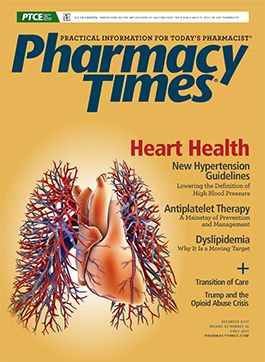A Change of Heart: How Brown Bagging Can Bring Clarity
One option to help patients: brown bag consults, which can be essential safety and educational tools to measure and ensure quality care.
Hypertension, a major disease that affects many people, is an independent risk factor for coronary artery disease, stroke, and renal failure. There are a number of guidelines to review and understand when treating a patient with hypertension. It is important to discuss blood pressure goals, dietary habits, and medication regimens with them.
Patients who suffer from chronic conditions may be at a higher risk for medical-related episodes and errors. These patients take many medications, visit a variety of health care providers, and may use more than 1 pharmacy. Often, patients experience short- or long-term changes in their health.
One option to help patients: brown bag consults, which can be essential safety and educational tools to measure and ensure quality care. By asking patients to bring in all their current medications, including OTC, mail order, specialty, and herbal products, pharmacists can ensure up-to-date and appropriate care.
Pharmacists are key providers in the continuum of care, consistently helping to identify potential problems and concerns that may require follow-up with prescribers or a medication therapy session (MTM). It is essential that a pharmacist’s workflow allow for brown bag consults, which can do the following:
- Show how well patients understand their conditions and medications
- Provide insight into a patient’s lifestyle and quality of care
- Develop the patient-pharmacist relationship to help forge patient loyalty and trust, prevent medical errors, and create better individualized service
THE CASE
KD is a 54-year-old overweight woman who is a relatively new customer to the pharmacy. She is an account executive who has a desk job in a construction office. KD has become more aware of her weight issue and prescribed medications following a recent health scare involving a family member and the numerous media stories regarding health care changes. You notice her growing concern by the increased number of questions during your counseling sessions, specifically related to her heart, diet, and financial issues. Today, KD stops into the pharmacy to pick up her late refill prescription for atenolol. You counsel her about the potential misuse and explain the concept behind a brown bag session. You tell KD that due to her chronic disease states, you think that she would be an excellent candidate to participate in a review. You ask her if she would be interested in bringing all her medications to the pharmacy and reviewing them with you for proper use. KD is excited to have your attention. She explains that she feels confused trying to keep her medications straight and feels disengaged talking to her doctor. KD admits that she cannot afford a hospitalization like her family member recently experienced. She schedules an appointment to meet with you tomorrow during the hours when you have overlap coverage.
To prepare for tomorrow’s session, you pull up KD’s pharmacy profile to compare it to what is in her brown bag:
- Enalapril, 20 mg, once daily
- Atenolol, 50 mg, daily
- Furosemide, 20 mg, once daily every morning
- Atorvastatin, 40 mg, once daily every evening
- Levothyroxine, 25 mcg, once daily every morning
- Esomeprazole, 40 mg, once daily
- Paroxetine, 20 mg, once daily
KD arrives the next day for your appointment with pen and paper ready to create a list. She empties her brown bag and you notice these additional medications:
- OTC aspirin, 325 mg, once daily
- Calcium carbonate, 1000 mg, once daily
- Adult multivitamin, once daily
- OTC omeprazole, 20 mg, once daily
- OTC fish oil, 4 capsules daily
- Expired clopidogrel, 75 mg, once daily; last filled at a competitor pharmacy 6 months prior
- Expired Crestor (rosuvastatin) samples
As you review the medications for accuracy, KD confides in you that because of her limited budget, she is not always able to maintain compliance or loyalty to 1 pharmacy or physician. She admits to no longer having a dependable primary care provider and relies on urgent care clinics and emergency departments to monitor her medication refills and health. KD cannot remember the last time she had laboratory work performed and she also confesses to smoking again after quitting 5 years ago. She has been monitoring her blood pressure more frequently at the pharmacy and has questions about goals and diet. You instruct her on how to take a reliable blood pressure reading, and KD purchases a cuff for home use. You are able to take a more thorough medical history and discover that she has two cardiac stents and is not actively seeing a cardiologist. Thus, she is very interested in participating in the offered MTM session you propose as a follow-up. How would you properly review KD’s medication profile, and what advice could you offer her during the brown bag check-up? She needs to establish care with a provider in the community to help effectively manage her conditions.
How can you help refer KD to the correct individuals who will have a vested interest in her health? Are her medications dosed properly for optimal use after she admitted to nonadherence?

